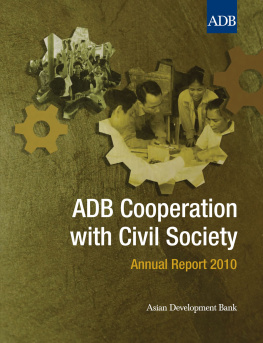This edition is published by PICKLE PARTNERS PUBLISHINGwww.picklepartnerspublishing.com
To join our mailing list for new titles or for issues with our books picklepublishing@gmail.com
Or on Facebook
Text originally published in 1991 under the same title.
Pickle Partners Publishing 2014, all rights reserved. No part of this publication may be reproduced, stored in a retrieval system or transmitted by any means, electrical, mechanical or otherwise without the written permission of the copyright holder.
Publishers Note
Although in most cases we have retained the Authors original spelling and grammar to authentically reproduce the work of the Author and the original intent of such material, some additional notes and clarifications have been added for the modern readers benefit.
We have also made every effort to include all maps and illustrations of the original edition the limitations of formatting do not allow of including larger maps, we will upload as many of these maps as possible.
FACTORS AFFECTING JOINT COOPERATION DURING THE CIVIL WAR
By
LCDR Timothy R. Hanley, USN
ABSTRACT
This study is a historical analysis of selected joint Army Navy operations conducted along the East Coast during the American Civil War. It begins with a description of the ante-bellum conditions of the Army and Navy and the organizational structure of the War and Navy Departments. Three joint operations are analyzed; the Fort Sumter Relief Expedition of 1861 , the Port Royal Expedition of 1862 , and the Charleston Campaign of 1863 .
In none of the joint operations covered by this study was there a unified command structure between the Army and Navy. Mutual support between the services was dependent upon voluntary cooperation between the respective service commanders.
This study determines what factors influenced the degree of cooperation between the service commanders of joint operations during the Civil War. Many of the factors which either facilitated or hindered joint cooperation during that time could affect contemporary joint operations, particularly in the early stages before a unified command structure is established. An appreciation of those factors is both helpful in understanding the outcome of Civil War joint operations as well as providing some insight into the problems faced by contemporary commanders in a joint environment.
List of Maps
South Atlantic Coast
Attack on Forts Walker and Beauregard
Charleston Harbor, 1863
Naval Attack on Charleston
Operations against Morris Island
CHAPTER ONE INTRODUCTION
This paper will investigate those factors which affected cooperation between the Army and Navy during the Civil War. The primary research question which served as the focus of this paper was: Was the success or failure of joint operations primarily dependent upon the personalities of the local army and navy commanders involved?
Since the organization of the Joint Chiefs of Staff, in the early 1940s, an increasing amount of effort has been expended in improving the efficiency of joint operations. The formation of the Department of Defense, the establishment of the Joint Staff, and even more recently the Goldwater-Nichols Act, have all been designed to reduce the competition and conflict between the armed services.
Since joint operations have received so much attention for so long, it is worthwhile to investigate joint operations from a period before formal procedures and requirements were in place to help ensure cooperation between the services. Such an investigation may illuminate those factors which tended to either help or hinder the successful completion of joint operations.
An understanding of those factors may aid in improving joint cooperation now and in the future. Factors which are normally present in joint operations and which tend to facilitate cooperation can be fostered and encouraged. Those factors which are usually hindering to cooperation can be reduced, if not altogether eliminated. This may prove to be important in the early stages of some future developing military situation or crisis where on-scene units from different services must work together before a formalized command structure is established.
The American Civil War offers an excellent example of American joint operations in an age lacking any institutional or traditional emphasis on cooperation between the services. The wide scope of operations, the varying conditions under which they were conducted, and most importantly, the variety of commanders involved, make it a fertile ground for research in this topic.
In order to conduct an investigation of sufficient depth while keeping the length of this paper within reasonable limits, it focuses on the following three joint operations:
1 . The Fort Sumter Relief Expedition of 1861.
2. The seizure of Port Royal Sound and associated operations in South Carolina and Georgia, 1861-62.
3. The campaign against Charleston, 1862-63.
Limiting this study to these three campaigns had several advantages. All of the campaigns were conducted in the same theater of operations; the East Coast. The period covered by these operations encompassed a large portion of the war, thereby allowing factors such as technological advances and experience to be assessed.
Operations along the Gulf Coast were not addressed because of the limited duration of those joint operations after their initial objectives had been seized. Joint Operations along the Western Rivers, although extensive, also were not addressed due to the degree of subordination between the services. The subordination of the Navy to the Army was formal early in the war. Although the Navy later became an Independent command, the nature of riverine operations continued to foster a degree of subordination of the Navy to the Army. Such subordination may have masked or precluded problems in cooperation that surfaced in other operations where the services were on a more equal footing.
Several terms need to be defined as they are used in this paper and some of its source quotations:
(1) Successful operation: A joint operation in which Army-Navy cooperation was a factor in achieving the objective of the operation or one in which, although the objective was not achieved, it was not due to any significant failure of Army-Navy cooperation.
(2) Joint operation: An operation involving both Army and Navy forces. Some sources also refer to Combined Operations, with the same definition.
(3) Military operation: An operation involving primarily or exclusively Army forces, or an operation under Army control. This 19th century convention is frequent in documents from that time.
(4) Naval operation: An operation involving primarily or exclusively Navy forces, or an operation under Navy control.
(5) East Coast: The Civil War theater of operations stretching from the coastal waters of Virginia to the Florida Keys, to include tidal estuaries, bays, and navigable rivers.
A search of both primary and secondary source material on the Civil War indicates that the subject of intra service cooperation during Civil War joint operations has not been directly addressed. There are numerous histories available covering joint operations, most of which are histories of the Navys involvement in the war.










